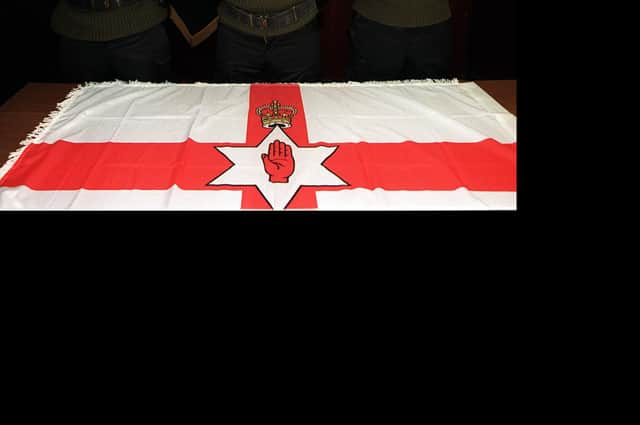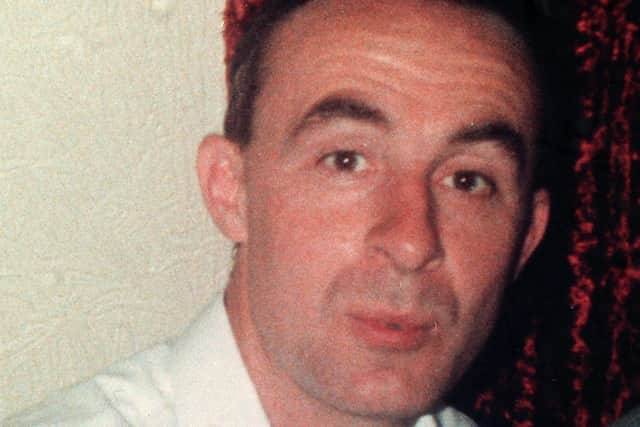Ombudsman’s report: Some agents ‘accomplished liars’ said ex-SB officer


The former RUC officer also told PONI investigators working on Operation Greenwich that he “did not believe an informant ever told a handler that they had been involved in murder”.
According to the PONI report – examing a series of loyalist murders carried out between 1989 and 1993 – he added that he “did not believe a police officer would have continued to use an informant who made such an admission, as an admission of this nature would require the informant to be cautioned and arrested”.
Advertisement
Hide AdAdvertisement
Hide AdThe officer, whose responsibility it was to authorise or reject potential informants, accepted that some informants may have been suspected of murder, but that this, however, could not be proven.


The PONI report adds: “[The former senior officer] stated that informants were warned in advance of the conditions for their registration, including, ‘no involvement in crime full stop, including beatings, robberies and murder.’ On occasions, when a high level informant was involved, these conditions were reinforced by a more senior Special Branch officer who would be present during meetings with the informant.
“He stated that if circumstances arose where an informant intended to participate in a crime, then authorisation for participation in a crime or for continued use would be required from the Regional Head of Special Branch and the relevant ACC.
“He stated that membership of a proscribed organisation could be interpreted as participating in crime. Recruiting an informant who played a central role in a paramilitary organisation, rather than on the periphery, carried high risks and the corresponding police strategy had to consider, and minimise, the risk to the public.”
Advertisement
Hide AdAdvertisement
Hide AdAs this officer is now deceased, the report adds: “This investigation was, therefore, unable to fully explore the decision making process involved in the recruitment of informants.”
The report goes on to say: “The former SB officers interviewed by my investigators all stated that in order to obtain accurate and actionable information, which could be effectively used to counter paramilitary organisations, an informant had to be closely connected to ongoing terrorist activities.”
The report’s author highlights difficulties “in respect of the absence of legislation and guidance,” but adds: “They continued in their efforts to infiltrate paramilitary organisations, while simultaneously attempting to act within the law. I acknowledge the legal and ethical dilemmas faced by handlers at the time when faced with unclear guidance as to how they were expected to perform their duties. However, police also had... a duty to protect life.”
• The latest Ombudsman (PONI) report contains a number of examples where the long-held concerns of the victim’s family were proved to be without foundation once independently investigated.
Advertisement
Hide AdAdvertisement
Hide AdIn the case of Bernard O’Hagan – a Business Studies lecturer and Sinn Fein councillor who was murdered as he arrived at Magherafelt Technical College – his family expressed their belief that the RUC “failed to interview all the available witnesses”.
During the course of the fresh investigation, PONI staff found that more than 650 potential witnesses were identified and spoken to by police, including witnesses at the college, during house-to-house enquiries and at a later police reconstruction of the murder.
The Ombudsman concluded: “I am of the view, having reviewed the relevant RUC investigation files, that police did not miss any opportunities in respect of identifying and interviewing witnesses to Mr O’Hagan’s murder.”
The report also reveals that the RUC’s murder investigation was hindered by “nine individuals who witnessed the murder” but who “declined to assist the police investigation.”
Advertisement
Hide AdAdvertisement
Hide AdIt was also the O’Hagan family’s belief that police had “failed to utilise a photo-fit image of the murderer to its full potential by not publishing it in the media”.
However, PONI investigators found that: The photo-fit image of the gunman was produced and distributed to regional television stations and newspapers.
“It was also circulated to all police stations in the area in an attempt to identify the gunman.
“The murder was covered on the ‘Police Six’ television programme, where a further appeal for witnesses was made. I am of the view that police took all reasonable steps to circulate the relevant photo-fit image.”
Advertisement
Hide AdAdvertisement
Hide AdIn relation to a further claim that the murder scene was not properly preserved, the report states: “I am of the view that the scene was managed in a professional and organised manner, given the circumstances and difficulties faced by police.”
• The Police Ombudsman’s investigation examined police actions in relation to a total of 19 murders and multiple attempted murders.
These were:
• The murder of Gerard Casey at Rasharkin, Co Antrim, on 4 April 1989
• The murder of Eddie Fullerton at Buncrana, Co Donegal, on 25 May 1991
Advertisement
Hide AdAdvertisement
Hide Ad• The murder of Patrick Shanaghan at Castlederg, Co Tyrone, on 12 August 1991
• The murder of Thomas Donaghy, at Kilrea, Co Londonderry, on 16 August 1991
• The murder of Bernard O’Hagan at Magherafelt, Co Londonderry, on 16 September 1991
• The attempted murder of James McCorriston at Coleraine, Co Londonderry, on 14 February 1992
Advertisement
Hide AdAdvertisement
Hide Ad• The murder of Daniel Cassidy at Kilrea, Co Londonderry, on 2 April 1992
• The attempted murder of Patrick McErlain at Dunloy, Co Antrim, on 28 August 1992
• The murder of Malachy Carey at Ballymoney, Co Antrim. Mr Carey was shot on 12 December 1992 and died the following day as a result of his injuries
• The murders of Robert Dalrymple, James Kelly, James McKenna, and Noel O’Kane at Castlerock, Co Londonderry, on 25 March 1993. A fifth man, Gerard McEldowney, was seriously injured
Advertisement
Hide AdAdvertisement
Hide Ad• The murders of John Burns, Moira Duddy, Joseph McDermott, James Moore, John Moyne, Steven Mullan, and Karen Thompson at the Rising Sun Bar, Greysteel, Co Londonderry, on 30 October 1993.
An eighth victim, Samuel Montgomery, died as a result of injuries sustained in the attack on 14 April 1994.
——— ———
A message from the Editor:
Thank you for reading this story on our website. While I have your attention, I also have an important request to make of you.
With the coronavirus lockdowns having had a major impact on many of our advertisers — and consequently the revenue we receive — we are more reliant than ever on you taking out a digital subscription.
Advertisement
Hide AdAdvertisement
Hide AdSubscribe to newsletter.co.uk and enjoy unlimited access to the best Northern Ireland and UK news and information online and on our app. With a digital subscription, you can read more than 5 articles, see fewer ads, enjoy faster load times, and get access to exclusive newsletters and content.
Visit https://www.newsletter.co.uk/subscriptionsnow to sign up.
Our journalism costs money and we rely on advertising, print and digital revenues to help to support them. By supporting us, we are able to support you in providing trusted, fact-checked content for this website.
Ben Lowry, Editor